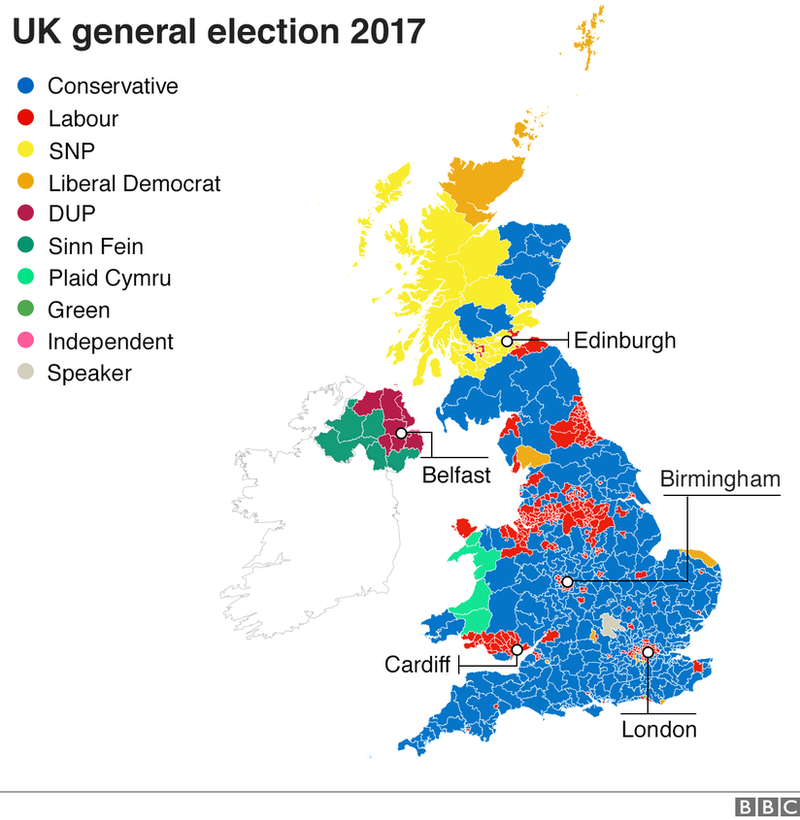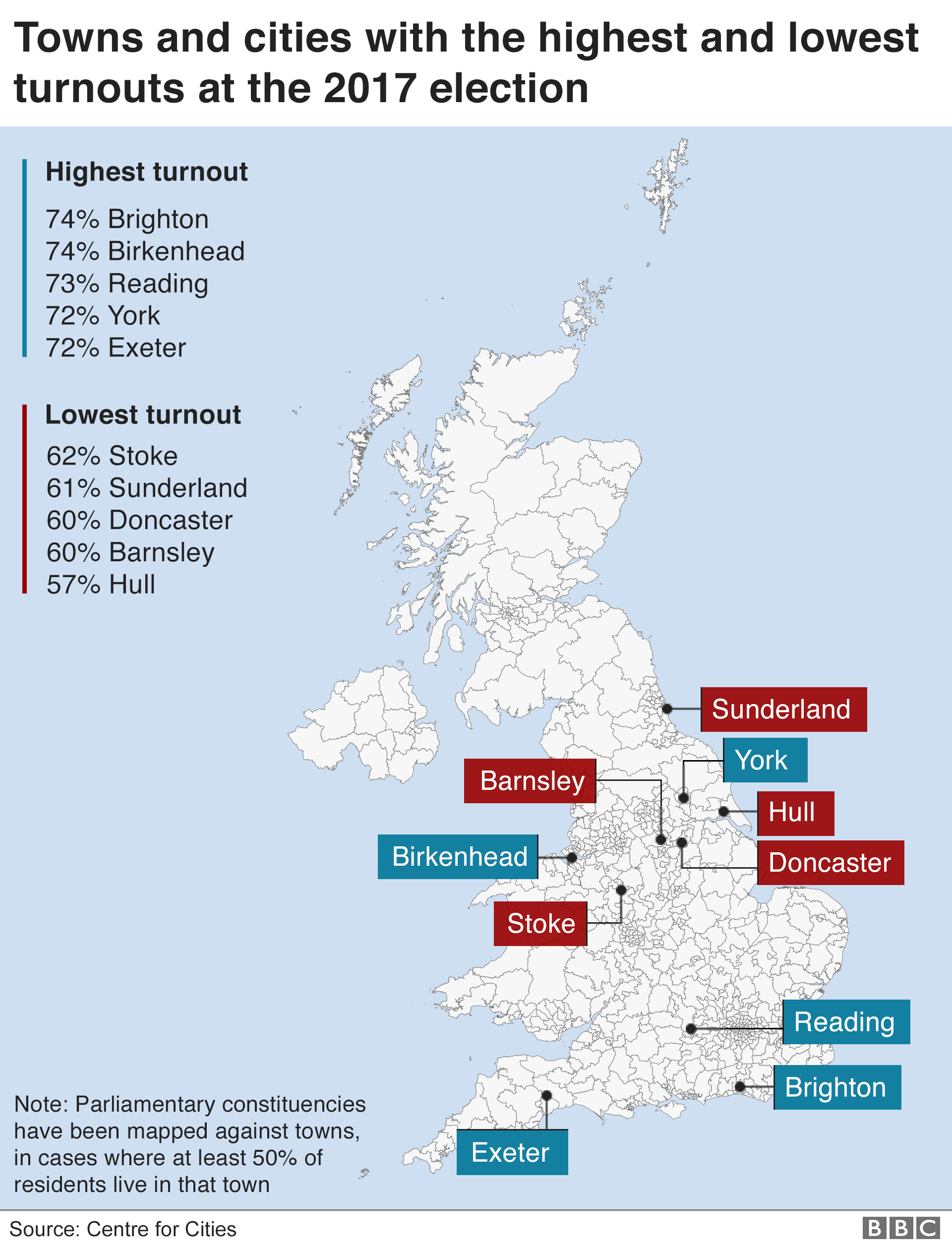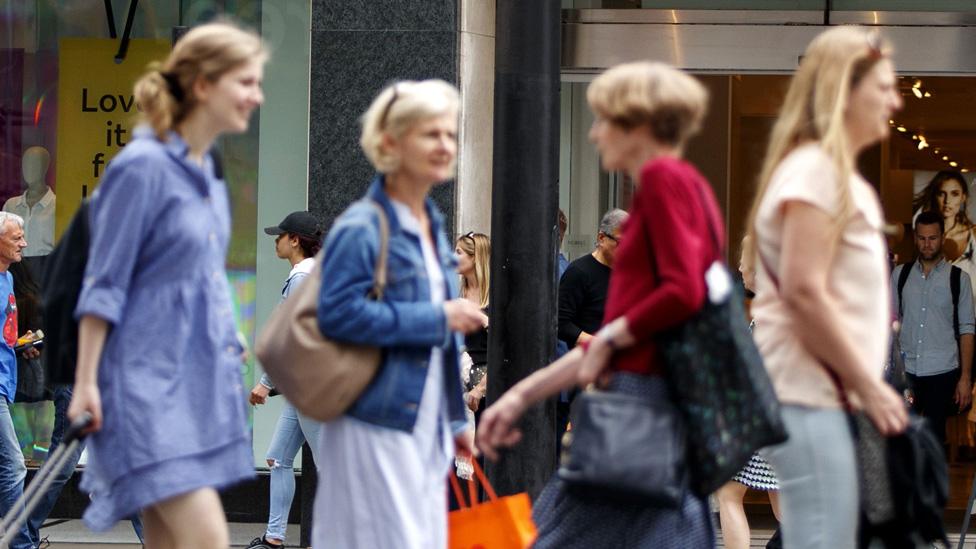General election 2019: The towns and cities least likely to vote
- Published
- comments

When the UK goes to the polls on 12 December, how much difference will where people live make to how likely they are to vote?
And how will it affect who they vote for?
Are people in cities less likely to vote?
City dwellers are less likely to vote than the rest of the country on average, but only slightly.
In the 2017 general election, 67% of voters in large towns or cities went to the ballot box, while elsewhere turnout was slightly higher at 70%.
The constituencies with the highest and lowest turnouts were both in cities.
London's Twickenham topped the list, with 80% of voters going to the polls. At the other end was Glasgow North East, where just 53% voted. Across the UK, average turnout was 69%.
For this article, we looked at how people voted in recent elections and mapped their constituencies against towns and cities that contained at least 50% of the residents in that constituency.
A large town or city is defined here as an urban area of 135,000 people or more, external.
Political differences
Who people choose to vote for does change depending on where they live.
In 2017, residents of smaller towns or rural areas were more likely to vote Conservative while city dwellers were more likely to vote Labour.
This divide has been deepening over time. At the last election, 48% of voters outside of large towns and cities voted Conservative, up from 40% in 2010.
The opposite has happened for Labour. Between 2010 and 2017 the party's share of city voters increased from 35% to 49%.
The Liberal Democrats have also seen their voter base become less urban. In 2010, 48% of their votes came from cities, but by 2017 this had fallen to 42%.

North-south divide
Voter turnout figures vary greatly from city to city.
Large towns and cities in the south are on the whole more likely to see a higher showing than elsewhere.
Ten of the 15 cities with the highest voter turnout in 2017 were in the south of England, although two of the top five were not.
Brighton was the city with the highest turnout, with 74% of people registered to vote going to the polls. It was also the only constituency to elect a Green Party MP.
It was closely followed by Birkenhead, Reading and York. Back in 2010, Edinburgh saw the highest turnout.
At the other end of the scale, Hull had the lowest turnout, with 57% of those registered casting a vote. It was closely followed by Barnsley, Doncaster, and Sunderland.

What about people who aren't registered to vote?
These figures only tell part of the story.
In September, up to 9.4 million Britons, or 17% of the eligible voting population,, external were thought to have not registered to vote at their current address, or at all.
However, about two million people, external are believed to have subsequently registered ahead of December's election.

Why are some more likely to vote than others?
We don't know exactly what motivates people to go to the ballot box, and there are likely to be a number of factors at work
Local pay levels appear to play into how likely people are to vote.
Broadly speaking, cities with lower voter turnouts tend to be less affluent and offer people lower wages.
Similarly, constituencies with higher deprivation, external - a measurement based on issues such as income, employment, health and crime - tend to see proportionately far fewer people turning out on polling day.
These most deprived constituencies are overwhelmingly urban. Of the 100 most deprived constituencies, 88 are in cities.

Where do parties get the most votes?
An exception to this trend is Liverpool Walton. Despite being the most deprived parliamentary constituency in England and Wales, it had a high share of its residents going to the polls. In 2017, 67% of them turned out to vote - making it comparable to more affluent constituencies such as Watford.
The Labour candidate there won 85.7% of the vote, the highest share of any MP. This helped make Liverpool the strongest Labour-voting city in 2017, with an 83% voter share - up from 63% in 2010.
The city also saw the largest increase in the share of people going out to vote, with 68% of voters turning out in 2017, compared to 57% in 2010.

CONFUSED? Our simple election guide, external
POLICY GUIDE: Who should I vote for?, external
REGISTER: What you need to do to vote

By contrast, the town where the Conservatives won the highest share of the vote was Aldershot in Hampshire, with 60% of voters backing the party. It was closely followed by Basildon and Southend in Essex.
The Tories' largest inroads were in Mansfield in Nottinghamshire, where their vote share shot from 24% to 44%, narrowly giving the market town its first-ever Conservative MP.
The Liberal Democrats saw their strongest 2017 performance in Cambridge with 29% of the vote. In Scotland, the SNP performed strongest in Dundee - with support for the party at 45%.
While trends may get stronger, or changes occur on the margins, overall patterns are likely to stay the same in the forthcoming general election.
But if any party is to form a majority - or deny another party one - it will need to win marginal seats in smaller cities. There are many examples, such as Mansfield, Aberdeen, or Stoke, where the Conservatives took Stoke-on-Trent South constituency from Labour by just 663 votes in 2017.
One way of doing this is to reach out and appeal to voters from across a widening urban-rural political divide.

About this piece
This analysis piece was commissioned by the BBC from an expert working for an outside organisation.
Paul Swinney is director of policy and research at the Centre for Cities, which describes itself as working to understand how and why economic growth and change takes place, external in the UK's cities.

Edited by Eleanor Lawrie
- Published2 November 2018
